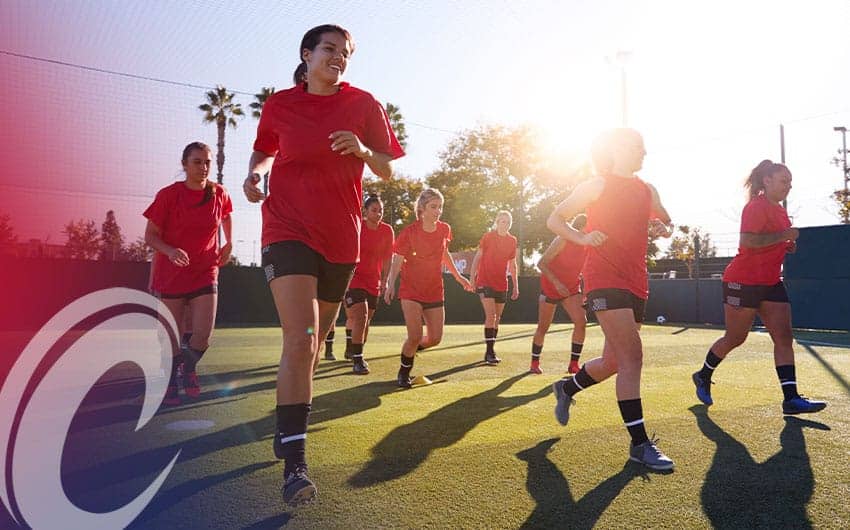Outdoor sports have officially returned to Orange County. Though many athletes have been training, conditioning and playing games, the intensity will definitely be ramping up with more practices and games each week. The COVID-19 pandemic put many sports on the shelf for a significant time, and with club and high school coaches raring to go, the volume of practices and games will definitely tax all athletes involved. With club and high school sports going at the same time, athletes may be asked to practice twice a day and play upwards of four games a week for only one sport. What if your athlete plays multiple sports? Though everyone is excited to get back to play, it is important to make sure your athlete is doing everything possible to stay healthy and not go back on the shelf. Injuries will occur and stats show that the older you are and the higher the level you play, injury rates will increase, so it’s imperative to take some simple steps to stay injury free and in the game. Below are 5 tips that can easily be followed to stay healthy during the return.
- Eat, drink and sleep: With increased activity, your athlete will burn more calories and will need to eat more to replenish energy. More practices and more games means more sweat that can lead to dehydration. Dehydration can cause painful muscle cramps, decreased performance and lead to heat illnesses. More time at the field will leave less time at home to do schoolwork which should be at the forefront. Often sleep gets overlooked and the lack of it can affect performance and lead to injury.
- Warm up properly: Preparing to play will warm up the muscles increasing the flexibility of the tissue to decrease the chance of injury. A proper dynamic warm up includes stretching while moving, simple agility exercises such as shuffling and butt kickers and sport specific movements such as passing drills. Muscle activation exercises such as miniband walks are also beneficial prior to practice and games.
- Cool down after play: When practice or games end, it’s not a good idea to just get in the car and go home. Take 10-15 minutes to get in a light jog for 3-5 minutes. Follow this by foam rolling tight and sore muscles and stretching them out. Before activity, avoid static stretching, but afterwards can be very beneficial. Though the foam rolling may hurt, the stretching should not.
- Don’t forget to strengthen: Time will be scarce, but ignoring strength training and injury prevention exercises can’t take a back seat. Playing more doesn’t make an athlete stronger, but can actually break your muscles down and weaken them. There is a reason professional athletes lift frequently during the season, even after games. Find time two to three days a week to perform some sort of strength and stability exercises such as lunges and planks to reduce the risk of injury.
- Don’t ignore pain: With the increase in intensity and frequency of exercise, there will be inherent muscle soreness. Try and differentiate soreness from pain. Anything that alters the way you play such as sprinting or cutting, lingers more than a couple of days or pain that is associated with a sudden onset like rolling an ankle should be seen by a healthcare professional such as an Athletic Trainer, Physical Therapist or Physician. These professionals can decipher what is wrong and what needs to be done to feel better, faster.
The next couple of months in Orange County will be exciting and hectic. Take a look at your athlete’s schedule and see what can be done to stay healthy and on the field. It’s great to be back, so let’s encourage athletes to do that little extra so they can get back to doing what they love.
Chris Phillips is an Athletic Trainer and Strength and Conditioning Specialist with over 20 years experience in professional hockey, football and soccer and has worked with numerous hall of famers and Olympians. He is the owner of Compete Sports Performance and Rehab located in Orange County, CA and can be reached through his website at www.competeperformance.com

